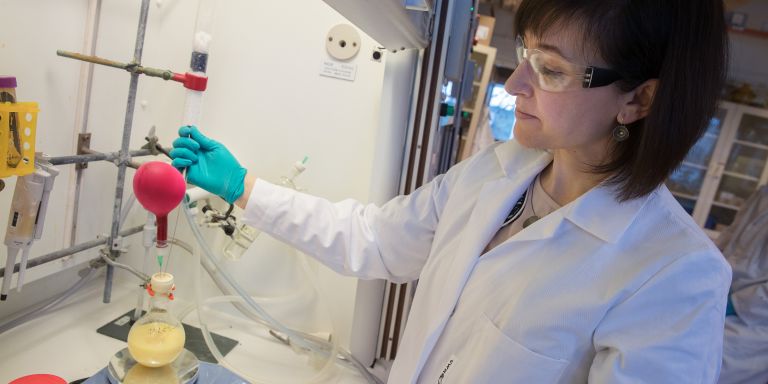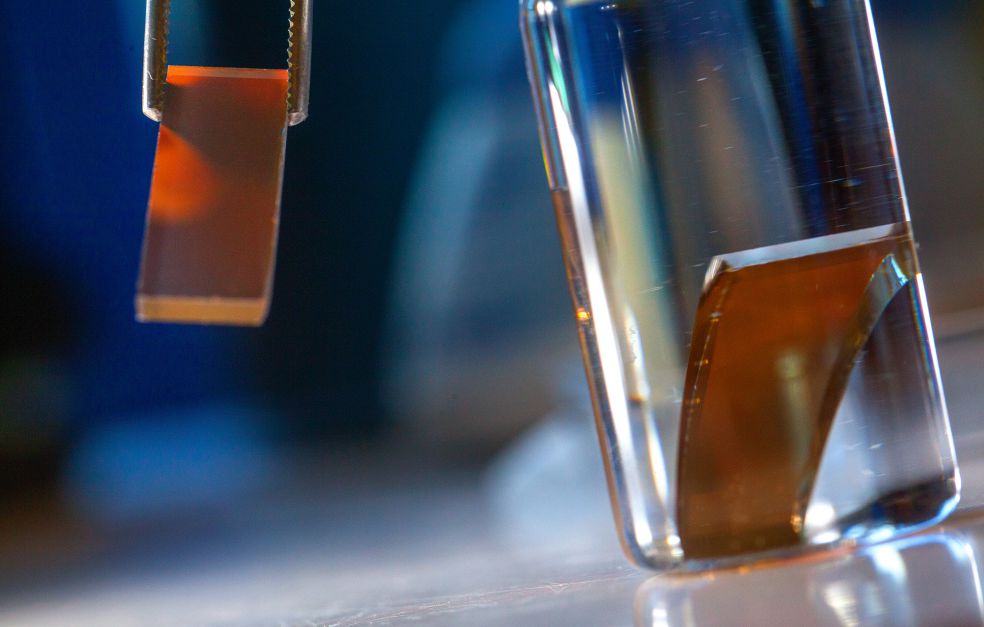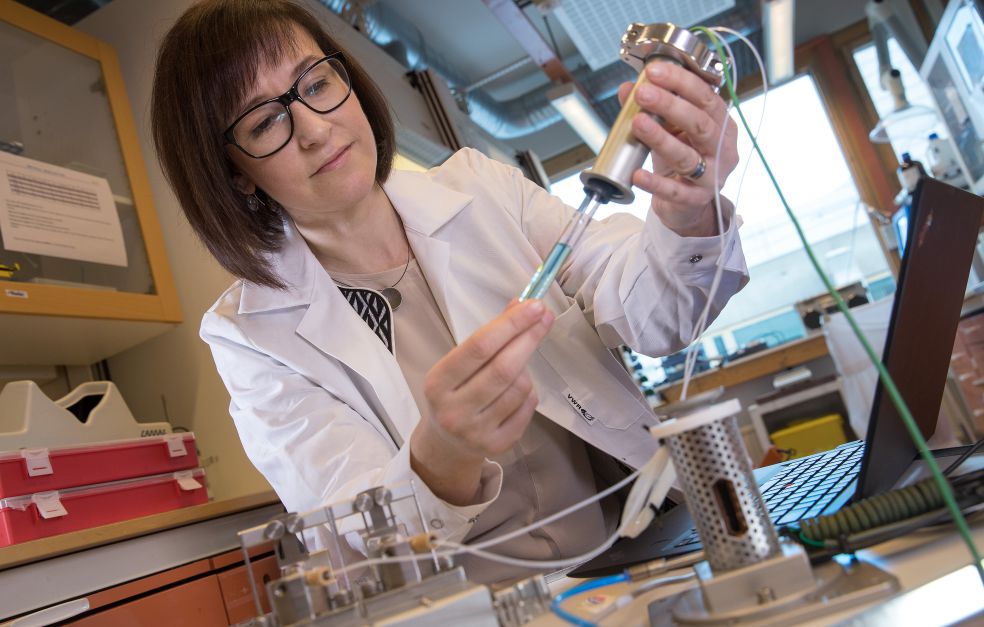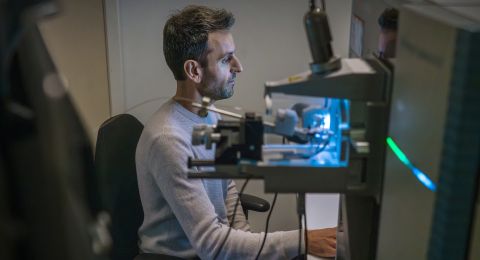
Project Grant 2016
Catalytic composites for sustainable synthesis
Principal investigator:
Belén Martín-Matute, Professor of Metal-Organic Synthesis
Co-investigators:
Stockholm University
Andrew Kentaro Inge
Pher Andersson
Ziaodong Zou
KTH Royal Institute of Technology
Mårten Ahlquist
Licheng Sun
Institution:
Stockholm University
Grant in SEK:
SEK 36 million over five years
“We can’t rely on fossil resources for ever. I want us to be able to make chemicals in a sustainable way – and water and carbon dioxide are plentiful raw materials,” says Belén Martín-Matute.
But although water and carbon dioxide are present in large quantities on Earth, they are not particularly useful in chemicals manufacturing. They are not reactive enough.
If an oxygen atom is removed, however, water becomes hydrogen, and carbon dioxide becomes carbon monoxide, both of which are much more reactive. Both can be used as building blocks in the manufacture of other valuable chemical molecules, such as drug molecules, agricultural chemicals and plastics.
The problem is that hydrogen is extremely flammable and can form explosive mixtures with air, and that carbon monoxide in addition is a lethal gas.
These challenges will be met with the help of a new material developed by Martín-Matute and her colleagues at Stockholm University and KTH, in a project funded by the Knut and Alice Wallenberg Foundation.
Happening in the holes
In the material being developed by the Stockholm researchers, water and carbon dioxide will be converted into their respective reactive forms – hydrogen or carbon monoxide – which, as soon as they are formed, will be used to produce valuable chemical compounds. This will avoid the need for those involved in the manufacturing process to deal with dangerous gases. Martín-Matute elaborates:
“We are using a porous material so that the hydrogen or carbon monoxide can immediately undergo a further chemical process. This enables us to use these renewable resources without the need for advanced safety equipment or large-scale experimental apparatus.
The material that the researchers are developing is a composite. It is made up of two parts that each catalyze a stage of the process. The first catalyst removes the oxygen atom from the raw material. The second one triggers the stage in which the reactive building block is added to the molecule to be synthesized.
The catalysts are held in place in the porous supporting structure. At present nanoparticles of palladium are used as a catalyst in the second stage, stabilized in “metal-organic framework compounds”.
The two catalysts are very different from each other, and combining them in a single material is one of the challenges facing the project team. For instance, the first stage, known as the electrocatalyst, requires the material to conduct electricity, whereas a conductive material would probably destroy the second catalyst.
The researchers hope to modify the composition of the support material to enable the two catalysts to join to form a functioning material. One approach is to adapt the size of the pores in the material so that the molecule synthesized is not destroyed in the electrocatalyst. Martín-Matute explains:
“We can make the pores in the electrocatalyst small. This will enable water and carbon dioxide to enter, but there will be no room for the larger compounds that are formed, thus protecting them from destruction by the electrocatalyst.”
There are catalytic materials that can carry out the two processes separately, but not combined in a composite that avoids the need to deal with dangerous gases.
Must work together
So far the researchers have concentrated on the two parts of the material individually. The next step is to combine them to see what happens and what modifications are needed. A key factor is to get the materials to work well together.
“Identifying the conditions that are optimal for both is a major challenge. For instance, the first stage in the water reaction will probably require acid pH. Will the product catalyst work? We’ll have to find out,” says Martín-Matute.
A central part of the project is to ensure that the composite is stable enough to be used over and over again. The researchers are studying how and under what conditions different parts of the material are destroyed, and are then making preventive modifications.
Studying chemical reactions in real time
Martín-Matute explains that the project involves researchers specialized in catalysis of various kinds, and also researchers in the field of materials chemistry. Since the surrounding porous materials in which the catalysts are supported also affects the catalysis, this combination is essential.
Characterizing and studying the material is a central part of the project. Using synchrotron radiation, the researchers can even study the catalytic process while it is taking place.
“One aspect of our work is to see what happens on the surface of the palladium particles during catalysis – whether they get bigger or smaller, and where the catalysis takes place. If we know this, we’ll be able to create a better material,” says Martín-Matute.
The researchers are building their own reaction chambers for the synchrotron studies, which are taking place at the MAX IV facility in Lund. They will also be making the chambers available to other research teams.
“Much of what we develop along the way in this project may be of use to others. We want to generate new knowledge and create new tools, and share them with the research community,” Martín-Matute adds.
Text Sara Nilsson
Translation Maxwell Arding
Photo Magnus Bergström





